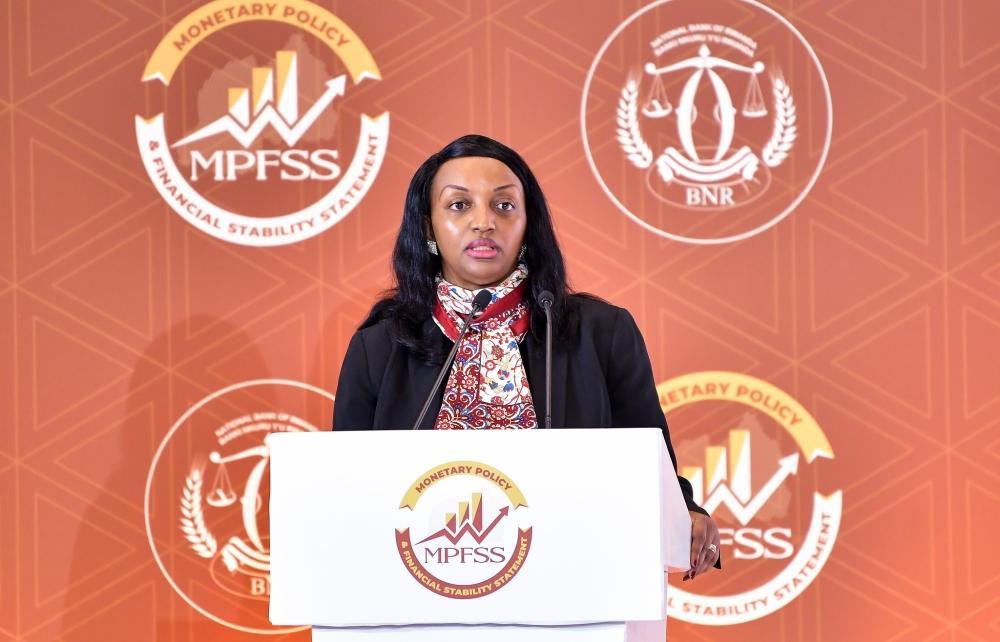Africa-Press – Rwanda. In today’s fast-evolving financial landscape, data-driven insights are crucial for fostering financial inclusion and accelerating economic growth. The National Bank of Rwanda (BNR) has taken a significant step forward by launching the Financial Inclusion Dashboard, an innovative platform designed to provide high frequent financial insights and bridge long-standing data gaps.
Until recently, stakeholders in Rwanda’s financial sector largely relied on FinScope surveys, conducted every four years to assess levels of financial inclusion. Now, the Financial Inclusion Dashboard offers a more dynamic alternative to complement Finscope Survey.
This interactive platform provides weekly updates on key financial inclusion data from financial service providers. The data are reported through the BNR Electronic Data Warehouse.
Launched last month, the dashboard offers policymakers, financial service providers, and other stakeholders high frequent insights into key indicators such as overall inclusion, savings, credit, and insurance. This shift marks a new era for Rwanda’s financial sector, where data informed decisions can be made more quickly and effectively.
With high frequent analytics, policymakers and financial institutions can address barriers to access and usage of financial services more effectively than ever before.
This breakthrough initiative is revolutionizing the way financial inclusion is tracked, enabling timely and informed decision-making at all levels.
“The Financial Inclusion Dashboard is a game changer,” said Valence Kimenyi, the Director of the Financial Sector Development and Inclusion Department at the National Bank of Rwanda.
“It enables us to track financial inclusion trends on a weekly basis and make data-driven decisions that support Rwanda’s financial inclusion agenda”.
Why the dashboard matters
Financial inclusion is a cornerstone of Rwanda’s economic development strategy. By providing up to date disaggregated data on key financial indicators including savings, credit, insurance, and transactional accounts, the dashboard empowers stakeholders to make informed decisions. The data can be filtered by gender, age, location and account type among other variables, allowing customized view and insights.
This dashboard will help policymakers to craft inclusive and effective financial inclusion policies based on data evidence, while financial institutions can refer to it and design customer-centric products. Development partners, on the other hand, can align funding and support with areas of greatest need and impact.
Key features of the dashboard
The Financial Inclusion Dashboard is designed to be a user-friendly and robust tool, offering financial inclusion data from banks, microfinance institutions (MFIs), savings and credit cooperatives (SACCOs), insurers, and e-money issuers.
It also has insights on financial service distribution, including agent networks, ATMs, branches, brokers, cards, internet banking, mobile banking services, merchants and POS.
The Central Bank of Rwanda headquarters in Kigali. File
Customizable filters allow users to analyze data by gender, age, location, and institution.
“This dashboard provides an unprecedented level of financial transparency. By breaking down data by demographic and institutional categories, we can better understand gaps and opportunities in the financial ecosystem,” Kimenyi added.
Who can benefit?
The Financial Inclusion Dashboard is an invaluable resource for policymakers, financial service providers, researchers, and development partners. By leveraging its insights, users can drive data-informed strategies that enhance financial inclusion across the country.
Stakeholders can easily access the dashboard through the National Bank of Rwanda’s official website, or directly, at https://fininclusion.bnr.rw/.
“This dashboard goes beyond just tracking numbers, it’s helping us rethink how we approach innovation and inclusion,” Kimenyi said.
Stakeholders welcomed the newly launched dashboard, saying that it would help them get up to date information hence taking informed decisions in their respective institutions.
“This dashboard is very important for stakeholders like us involved in promoting financial inclusion like the TREPA project targeting 260,000 participants with at least 30 percent women working with microfinance institutions in Eastern Province,” said Sylvie Mugabekazi, a climate resilience programme manager from Cordaid, an organization working to empower women farmers in finance sector.
“Such a dashboard that provides timely, location-specific data will allows us to make informed decisions not only for our ongoing interventions, but also for planning future projects. The dashboard is timely and aligns perfectly with our mission to enhance women’s access to financial services. It’s a commendable initiative, particularly monitored by the Central Bank, the regulator of financial inclusion to provide accurate and direct information.”
For More News And Analysis About Rwanda Follow Africa-Press






